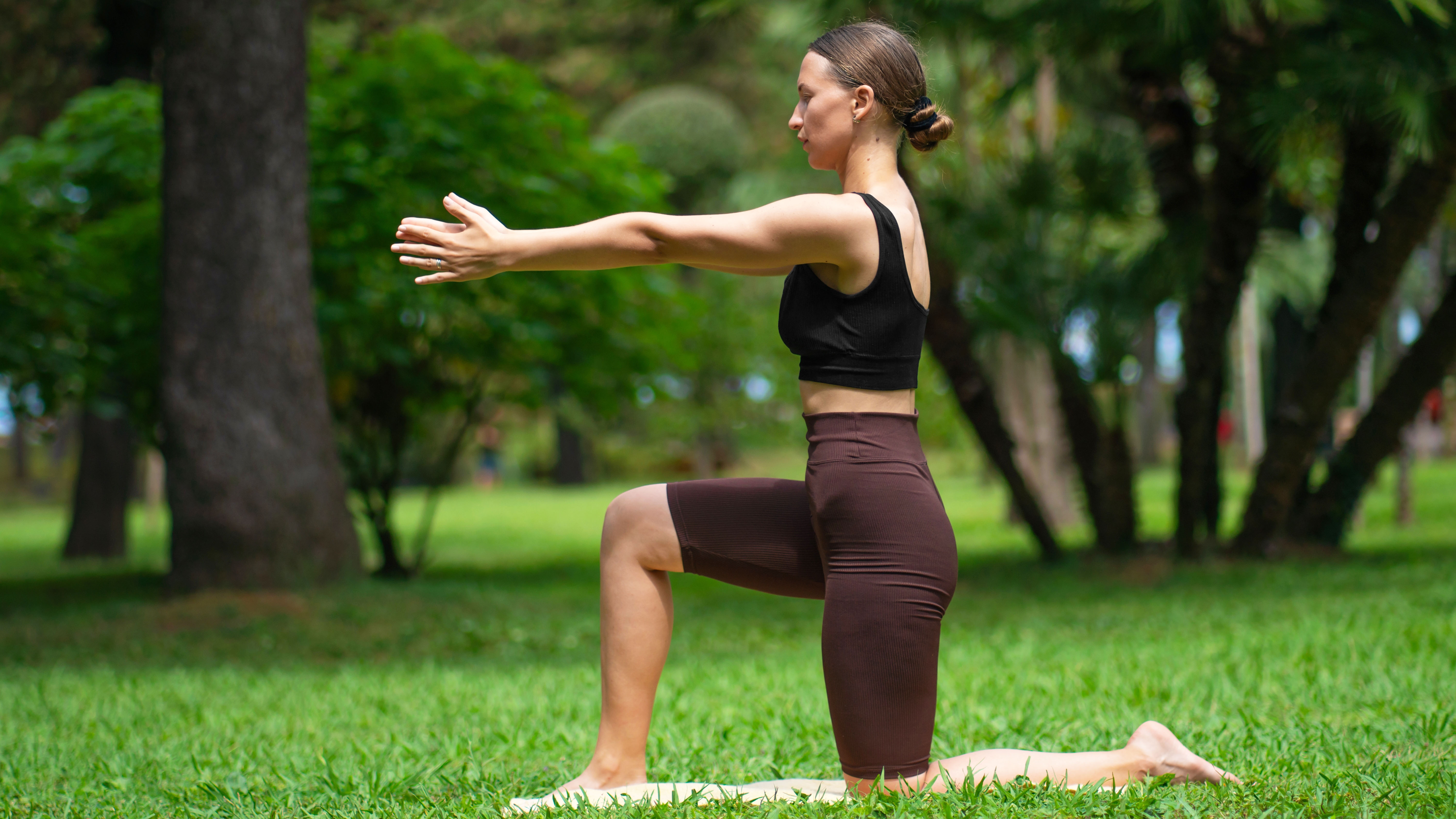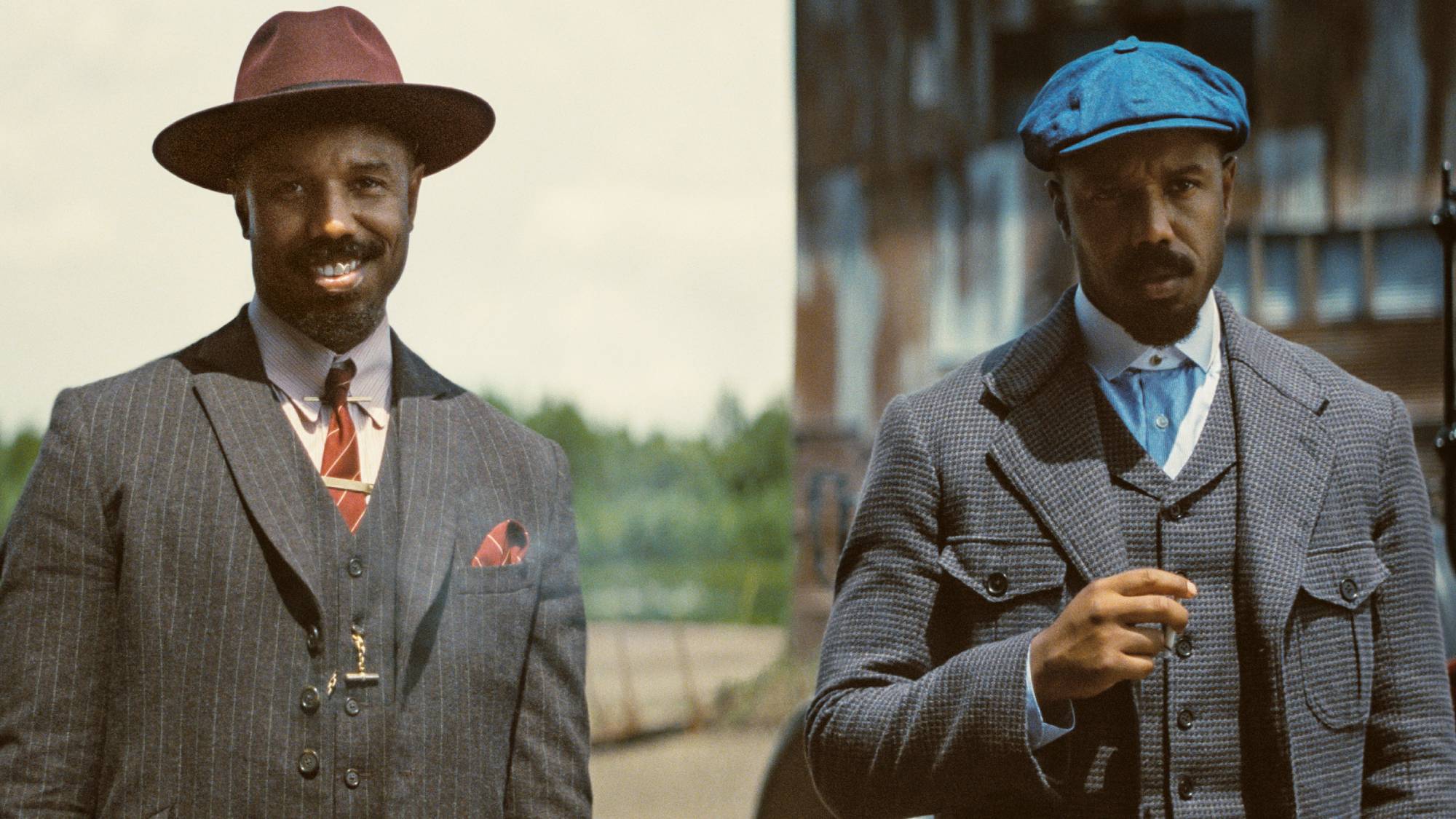Forget hip flexor stretches — do these 3 exercises instead to alleviate hip pain and improve flexibility
Spoiler: If you spend a lot of time sitting down, you’ll probably want to try these

If you spend a lot of time sitting down behind your desk, you’ve probably experienced tight hip flexors at some point. Tight hip flexors can also cause knee and back pain, so even if they don’t feel particularly tight right now, incorporating exercises into your routine to improve flexibility in your hip flexors is a must.
Improved flexibility in the hip flexor muscles can help you move with a better posture, and make exercises like running and lifting feel easier.
That said, when it comes to your hip flexors, stretches might not be the best place to start. If you’ve tried doing the pigeon pose in yoga, or hip rotations before heading out for a run, and you’re still experiencing tight hips, it might be time to swap your stretches for more dynamic exercises. According to Dr. Andy Fata-Chan, top NYC physical therapist, coach, and founder of Moment Physical Therapy & Performance, static stretching often fails to address the root cause of hip discomfort.
Instead, he recommends incorporating these targeted movements into your routine — either as a supplement or on their own — for lasting relief and improved mobility.
What are the hip flexors?
Let's start with the basics. Your hip flexors are a group of muscles that run along the front of your upper thigh. The hip flexors are made up of the iliacus, psoas major, rectus femoris, and sartorius. The iliacus and psoas major work together to flex and stabilize your hip as you walk, run, sit, and stand by pulling your thigh and torso together. The rectus femoris and sartorius support the flexion and extension of the hip and knee.
Tight hip flexors make it harder for your pelvis to rotate properly and are typically caused by prolonged sitting or repetitive hip-flexion movements like running and cycling. Signs of tight hip flexors include pain or discomfort in the front of the hip, but can also be associated with lower back or knee pain.
Of course, if you’re in any discomfort, it’s always a good idea to seek advice from a doctor or physical therapist.
Sign up to get the BEST of Tom's Guide direct to your inbox.
Get instant access to breaking news, the hottest reviews, great deals and helpful tips.
What are the best exercises to alleviate tight hip flexors?
According to Dr. Fata-Chan, when it comes to alleviating tight hip flexors and improving hop flexor mobility, the first step isn’t just stretching, “it’s addressing the position of your spine and pelvis. Moving out of extension and anterior pelvic tilt can immediately help reduce tension. It’s not that these positions are bad, but they do keep the hip flexors in a shortened state. Once alignment is optimized, eccentric training becomes key, as it helps remodel tissues over time for lasting length and mobility.”
Here are the exercises he recommends adding to your routine:
Sprinter march with low to high chop
How: To do this exercise, start by standing in front of a bench. Raise one foot onto the bench, and raise onto your tip toes on your standing leg. From here, use a medicine ball to perform a low to high chop, lifting the ball from your hip, across your body, and up over your head.
Why it works: This movement targets the rectus femoris, a key hip flexor, while the chopping motion enhances the stretch by aligning with the fiber orientation of the psoas.
Half-kneeling kettlebell halo
How: To do this exercise, start by kneeling on one leg, with the other leg at a 90-degree ankle with your foot flat on the floor. Lift one of the best kettlebells over your head, engage your core, and rotate the kettlebell around your head, like a halo. Switch directions after a few reps.
Why it works: The half-kneeling position places the hip flexors in a lengthened state, while the kettlebell halo challenges core stability and reinforces hip control under dynamic load.
Reverse nordic curl
How: To do this exercise, start from a kneeling position and engage your core. Squeeze your glutes together, and keeping a straight line from your knees, hips, and shoulders, slowly lean back as far as comfortable, before using your core to lift you back to your starting position.
Why it works: By keeping yourself in a straight line from your knees to shoulders and then slowly leaning back you are creating max length in your hip flexors under load.
Prying goblet squat
How: To do this exercise, grab your kettlebell and lift it against your torso, as you would for a goblet squat. Sink down into a low squat, keeping your feet flat on the ground, and move from left to right to stretch your hips and allow yourself to sink lower, keeping your back straight.
Why it works: The prying goblet squat is a great move when it comes to freeing up tight hips. The movement can help unlock your hips.
More from Tom's Guide
- Personal trainer shares the one simple hip flexor trick you're missing to boost lower body flexibility
- I'm a personal trainer, this one-minute stretch opens your shoulders and builds upper body flexibility
- No, not sit-ups — these are the two abs exercises you need to sculpt a six-pack, according to a personal trainer

Jane McGuire is Tom's Guide's Fitness editor, which means she looks after everything fitness related - from running gear to yoga mats. An avid runner, Jane has tested and reviewed fitness products for the past five years, so knows what to look for when finding a good running watch or a pair of shorts with pockets big enough for your smartphone. When she's not pounding the pavements, you'll find Jane striding round the Surrey Hills, taking far too many photos of her puppy.
You must confirm your public display name before commenting
Please logout and then login again, you will then be prompted to enter your display name.



